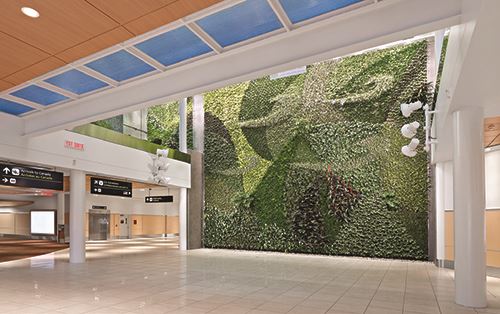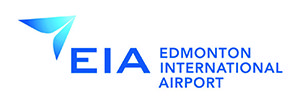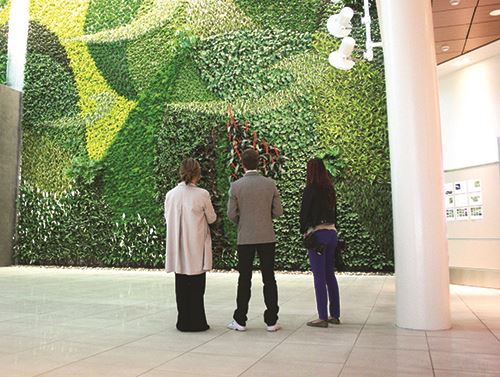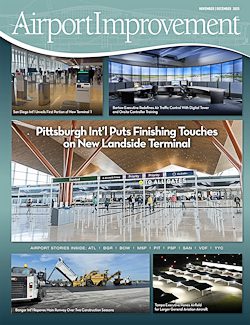At Edmonton International Airport (YEG), an installation made of plants literally adds tons of oxygen to the terminal every year and removes common airborne toxins.
Interior designers often say that art breathes life into commercial buildings. At Edmonton International Airport (YEG), an installation made of plants literally adds tons of oxygen to the terminal every year and removes common airborne toxins.
Mike Weinmaster, chief designer of Green over Grey, tapped into imagery of flight-friendly cirrus clouds for the main section of YEG’s living wall. More than 8,000 plants of various species, sizes, colors and textures create the swirling patterns. Many of the plants are epiphytes, which naturally live above ground without any soil.

The smaller wings of the installation are interpretation of works by celebrated Canadian artists Emily Carr (right wall) and Donald Flather (left wall). When creating these areas, Weinmaster worked to make the designs as true to the original artworks as botanically possible.
 From a practical standpoint, the 1,420-square-foot vertical garden is located at the bottom of the escalators near YEG’s Customs and Immigration facility, so both arriving and departing guests can enjoy it. An integrated drip irrigation system automatically waters the plants for a few minutes every day. Airport maintenance workers trim the growth and remove wilted blooms from flowers, using a scissor lift to reach the top portions of the wall.
From a practical standpoint, the 1,420-square-foot vertical garden is located at the bottom of the escalators near YEG’s Customs and Immigration facility, so both arriving and departing guests can enjoy it. An integrated drip irrigation system automatically waters the plants for a few minutes every day. Airport maintenance workers trim the growth and remove wilted blooms from flowers, using a scissor lift to reach the top portions of the wall.
Weinmaster strongly believes that as a society, we must find innovative ways to integrate nature into our ever-expanding cityscapes. YEG is certainly doing its part in Alberta. The airport’s living wall gives new meaning to “going green.” Crews installed the impressive feature in 2012 during a major expansion project, and the verdant work of art has been growing and evolving ever since.
To see a time-lapse video of the installation, visit https://youtu.be/DS8SMviwFYw



